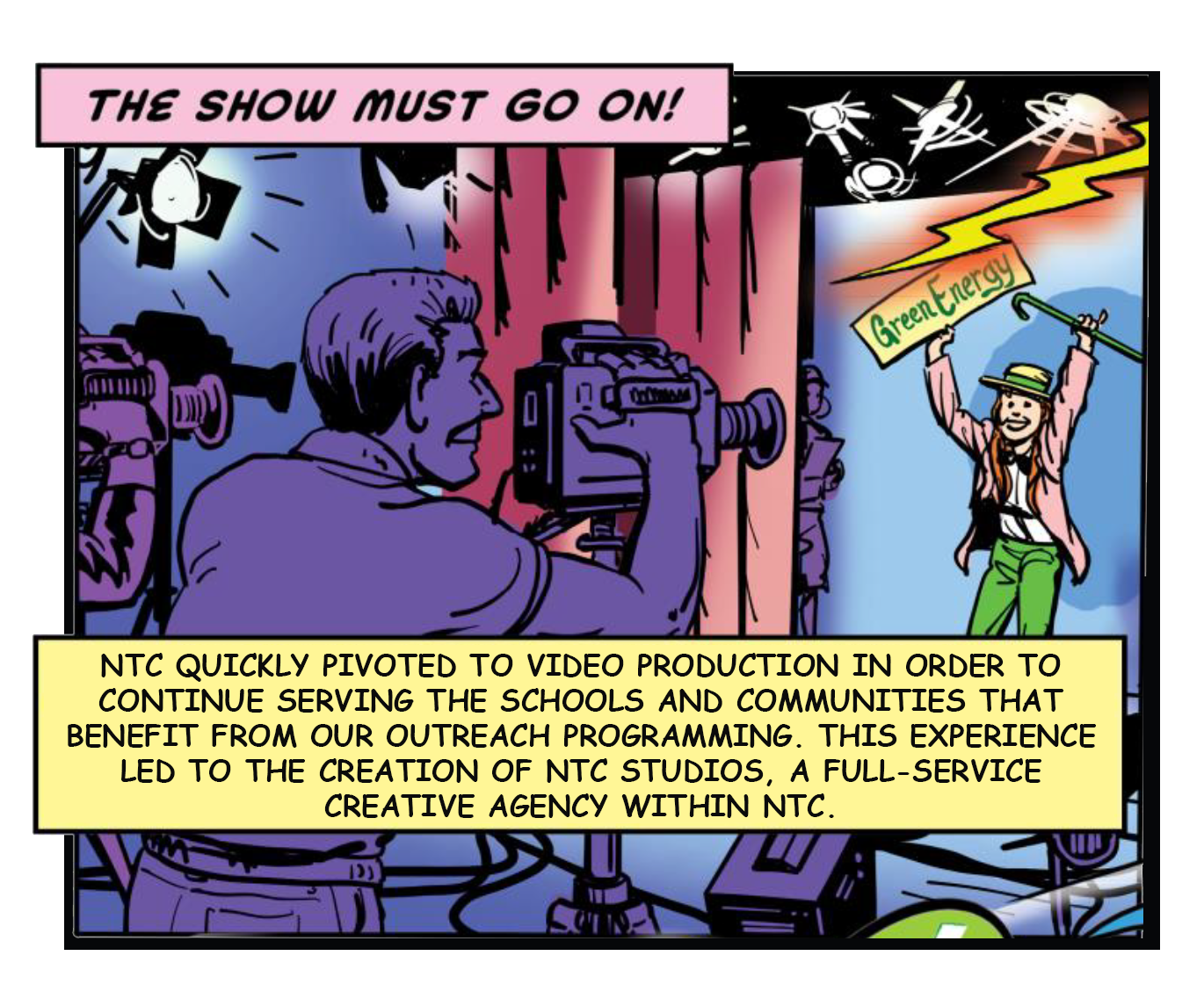
TOP FIVE RECRUITMENT VIDEO BEST PRACTICES FOR BETTER HIRING RESULTS
Today’s employment landscape is not just difficult for those seeking employment, but also for those looking to hire the best candidates. Let’s face it, the barrage of information that comes to us every day can be overwhelming and your job posting can easily get lost in the shuffle. One way to stand out is by using recruitment videos to get the attention of job seekers and provide them with specific information about your organization, and the roles you’re looking to fill.
This recruitment video guide is designed to help you learn how to make recruitment videos that work, including:
- What makes a good recruitment video
- What should be included in effective recruitment videos
- How you can leverage professional video services from the best results from employee recruitment videos.
Why Use Recruitment Videos

In a competitive hiring environment, recruitment videos can help you capture the attention of potential employees. Video content online is more likely to gain users’ attention than straight-up text by itself. Just think about the popularity of TikTok, Instagram Stories, and Facebook Reels to grasp the depth of video content consumption. Recruitment videos can harness the effectiveness of video content to capture attention so you can engage and attract top talent.
But making effective recruitment videos is not just a matter of turning the camera on and hoping for the best. Achieving the best results means employing best practices for hiring videos that will make them stand out to the candidates you want to attract. Let’s dive into the top five recruitment video best practices to get you ready to use this effective tool to expand your hiring pool.
#1: Make It Authentic
 One of the top video recruitment tips often thrown around is to “make it authentic”. But what does authenticity mean and why does it matter?
One of the top video recruitment tips often thrown around is to “make it authentic”. But what does authenticity mean and why does it matter?
Being authentic is another way of saying “tell it like it is” or “be real” or “keep it human.” No one is drawn to a company by polished corporate messaging. Candidates want to know what it is like to be an employee working at your company. Your recruitment videos can show this by highlighting the stories of genuine employees.
Authenticity helps build trust with potential candidates as well as helping your company, organization, or agency stand out amongst more generic content and create an emotional connection that can motivate candidates to apply.
Some recruitment video examples and tips that will help make your videos authentic involve the use of employee testimonials. This “insider” format weaves in day-in-the life employee experiences and features behind-the-scenes content to make your videos feel personal.
Testimonials can include:
- Employee discussions about their specific jobs and work experiences
- What their career pathway at the company has looked like
- What they find meaningful about their work
- How they feel about management, their co-workers and your organization
Do not worry about overly scripted content, which can often feel inauthentic or manufactured. Also make sure your videos do not focus exclusively on senior leadership but feature employees that represent a variety of positions and experience. Allow them to share their real experiences along with actual workplace scenarios. Remember to also include diverse voices and perspectives and not be afraid to also show challenges and growth opportunities. This transparency is a part of building trust.
You can have the flashiest video recruitment production values, but without authenticity your video is bound to fall short of its target—reaching the best candidates for the jobs you have available.
#2: Make it Concise and Engaging
With all the information available at our fingertips these days our attention span has shrunk, and engagement drop-off rates are real. Keeping your video shorter will help it perform better. It’s a top optimization strategy for reaching your audience.
An ideal length for social media videos is 30 to 90 seconds to capture the attention of those scrolling content on various social media platforms. For career site pages the ideal length is a more generous 2-3 minutes as you are most likely capturing an audience that has at least sought out your home page.
Beyond overall length, hooking your viewers in the first five to ten seconds of your video is key to reducing drop-off rates. You also want to incorporate dynamic visuals and pacing that retains viewer attention. Captioning for both accessibility and as a silent viewing option is also highly recommended.
To achieve these goals, lead with your most compelling information that filters into more details and ends with a clear call-to-action for the viewer.
#3: Make It a Showcase, not a Tell-Case
This video recruitment best practice embodies the adage, “show, don’t tell.” An effective recruitment video needs to go beyond a generic description of what a great place your company is to work. Instead it needs to show what a great place it is to work. It cannot just list your values. It needs to demonstrate those values in action. This is an opportunity to highlight team interactions, project collaborations and worthy accomplishments, unique perks, and benefits, and spark interest in your workplace culture. Potential employees care about more than just salary. Show them how this new job can change their life.
 You can employ visual storytelling techniques that balance personality with professionalism and create a real showcase for your company from an employee perspective. Capture candid moments between employees in real workspace environments, and reveal team dynamics and collaboration styles. You can also show learning and development opportunities, along with your organization’s approach to sustaining work-life balance for your employees.
You can employ visual storytelling techniques that balance personality with professionalism and create a real showcase for your company from an employee perspective. Capture candid moments between employees in real workspace environments, and reveal team dynamics and collaboration styles. You can also show learning and development opportunities, along with your organization’s approach to sustaining work-life balance for your employees.
#4: Make it Tailor-made for Your Ideal Candidate
This best practice hits at defining the why and who of your recruitment video, not just the what. Defining the purpose of your video includes defining your ideal candidate, so you can directly appeal to them as your target audience.
 Who do you want to attract? Entry-level or experienced candidates? Do you need to address talent shortages? Are you competing with a limited candidate pool with a specific skill set? Or does your company, industry, or sector have preconceived public perceptions that you want to change in order to attract more candidates? Your target audience will dictate your approach and your content. Take the time to understand your audience and tailor your content strategy accordingly.
Who do you want to attract? Entry-level or experienced candidates? Do you need to address talent shortages? Are you competing with a limited candidate pool with a specific skill set? Or does your company, industry, or sector have preconceived public perceptions that you want to change in order to attract more candidates? Your target audience will dictate your approach and your content. Take the time to understand your audience and tailor your content strategy accordingly.
Depending on your hiring scope, you may need to create role-specific or department-specific videos. You will also want to use language and terminology that will resonate with your target audience and address any specific concerns or questions they may have. It is also a great opportunity to illuminate career paths at your company that are specific to a given role.
Understanding your ideal candidate also means knowing where they are getting their information and optimizing your content for specific platforms. LinkedIn, for example, carries a more professional tone that concentrates on industry-specific insights. Instagram and TikTok on the other hand thrive on punchy, short-form visual content that is both creative and informative. YouTube is a platform that can handle longer-form content with more detail, while your career page can include more comprehensive content that gets at your workplace culture and highlights the specific roles that are available.
#5: Make Your Calls-to-Action Clear and Easy to Do
 Providing genuine information about your company and the roles you have available through the first four best practices is important, but without a clear and easy action for potential employees to take, the usefulness of your video is undermined. Passive viewing does not convert potential applicants into real applicants. Your video may motivate a candidate, but they need direction to know what to do next.
Providing genuine information about your company and the roles you have available through the first four best practices is important, but without a clear and easy action for potential employees to take, the usefulness of your video is undermined. Passive viewing does not convert potential applicants into real applicants. Your video may motivate a candidate, but they need direction to know what to do next.
Use effective call-to-action (CTA) strategies that include:
- Making the next steps obvious and easy
- Using clear and concise action-oriented language
- Providing multiple pathways for continued connection
Technical Considerations
In addition to the top five recruitment video best practices explained above, there are technical considerations that should not be overlooked. Video quality standards that include minimum resolution and audio clarity, loading speeds, accessibility, and mobile optimization will support the success of your hiring video. In addition, you also want to make sure you have consistent branding across all your video content.
Having key metrics in place to measure the success of your recruitment videos is incredibly important. Look at views, engagement, click-through rates, and any boost in your applications to weigh your video’s effectiveness. You can also employ A/B testing and candidate feedback to further gauge this effectiveness.
Employee Recruitment Videos: The Final Word
The five recruitment video best practices outlined in this guide, including making your video authentic, tailoring to your ideal candidate, and showing what makes your company unique, can help you stand out to potential employees and attract the candidates you need. Are you ready to implement these strategies?
Working with professional video services, like NTC Studios, can help you integrate these recruitment video best practices into your workforce development strategies. Contact us to discuss our capabilities, and explore solutions for your unique recruitment needs.



